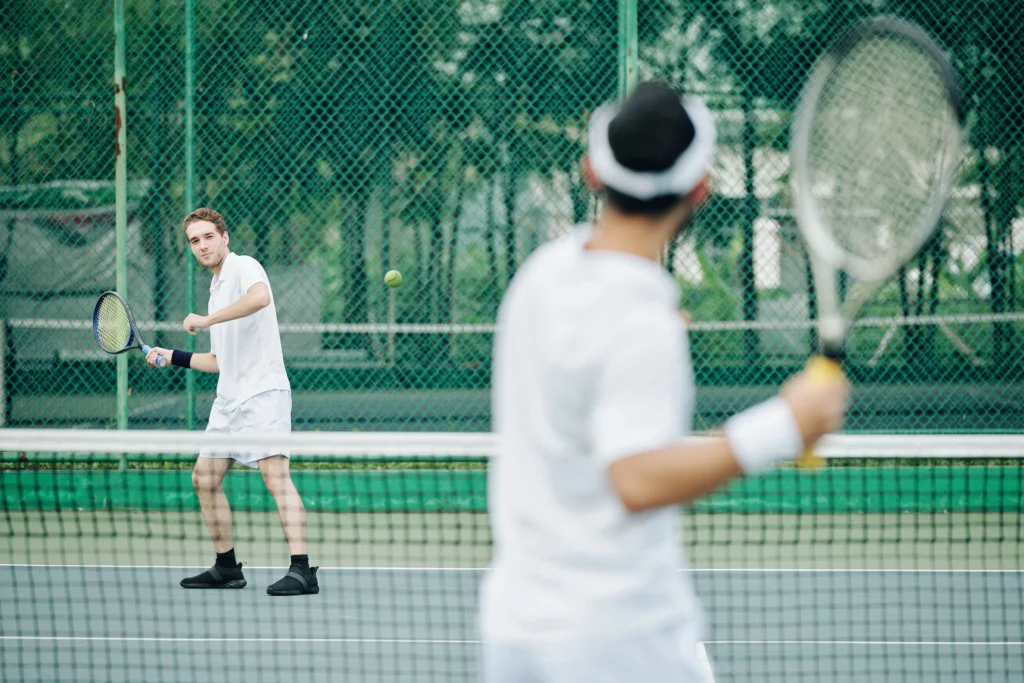Tennis And Protecting Your Shoulders

Normally at this time of year, Wimbledon fever would be upon us and people up and down the country would be dusting off their rackets ready to get back on court over the summer period. Now, although Wimbledon has been cancelled this year, tennis certainly hasn’t and has recently been announced by the government as one of the sports that people can take part in under COVID restrictions as social distancing can be maintained. Great news!! In this blog, we will be talking you through how to ensure you are ready to return to the court.
Tennis is a great form of exercise that improves fitness levels, builds muscle and bone strength and improves hand-eye co-ordination. It asks a lot of our body and particularly our shoulder. We see a number of tennis players who come to us with shoulder problems and there are many reasons for this.

The shoulder joint is naturally quite unstable because it has so much movement in many directions. It relies heavily on the muscles around it and the shoulder blade to give it the support and stability it needs. In order to achieve this, the muscles need to be strong, flexible and co-ordinated. With everyday activities, we rarely need to move our arms above our head for any length of time and so with repetitive overhead activities, like serving in tennis, our bodies are not naturally prepared for this.
For a lot of people, tennis is a seasonal sport and we tend to go from playing rarely or not at all over winter, to playing several times per week (weather permitting!) over the summer. When we are not playing and loading the shoulder in the same way, our shoulders can decondition and then when we return to playing, it is a quick increase in load that the tendons around the shoulder aren’t prepared for. On the whole, tendons like to be loaded, but sudden changes in load whether that be overload (playing lots of tennis) or underload (not playing regularly) can trigger responses within the tendon that then give us pain.
Serving in tennis is particularly strenuous on the shoulder. It is a full body action with over 50% of the power used to serve coming from our trunk and legs. Therefore we need to make sure the muscles around our trunk and legs are as prepared to return to tennis as the muscles around the shoulder are. If not, this increases the load on the muscles around the shoulder and the shoulder joint which increases the risk of injury.
Reduce the risk of shoulder injury when returning to tennis
Load management – as previously mentioned, tennis is typically seasonal, therefore when we are not playing regularly it is important to continue to challenge and load the muscles around the shoulder in movements we don’t do a lot of, like overhead movement to make sure those muscles don’t completely decondition when we are not playing. Here are a couple of examples of exercises that you could try:
OVERHEAD PRESS


You can try one arm lifting overhead initially and then progress to both arms overhead. Start with a light weight that is comfortable to manage at least 10 repetitions. As the exercise gets easier, increase the weight you are using.
SHOULDER MOVEMENT WITH THERABAND

Resistance bands are a great way to challenge muscles through movement.
Consistency is key – Maintaining a conditioning programme for our shoulder and body year round is a good idea to ensure that our tendons, muscles and joints are well prepared for the increase in activity with a return to tennis. This would typically include exercises that focus on flexibility as well as strength.
OVERHEAD SQUAT

This is a brilliant all-round exercise as it challenges your shoulder flexibility, thoracic (upper back) flexibility, leg and core strength, all of which we need when playing tennis. You can make this exercise more challenging by adding weight to the bar or holding dumbells overhead.
If you are struggling with pain or an injury, please get in touch. A physiotherapy assessment can help you identify what is causing symptoms and put together a plan to get you back on track (or on the court!) again.

